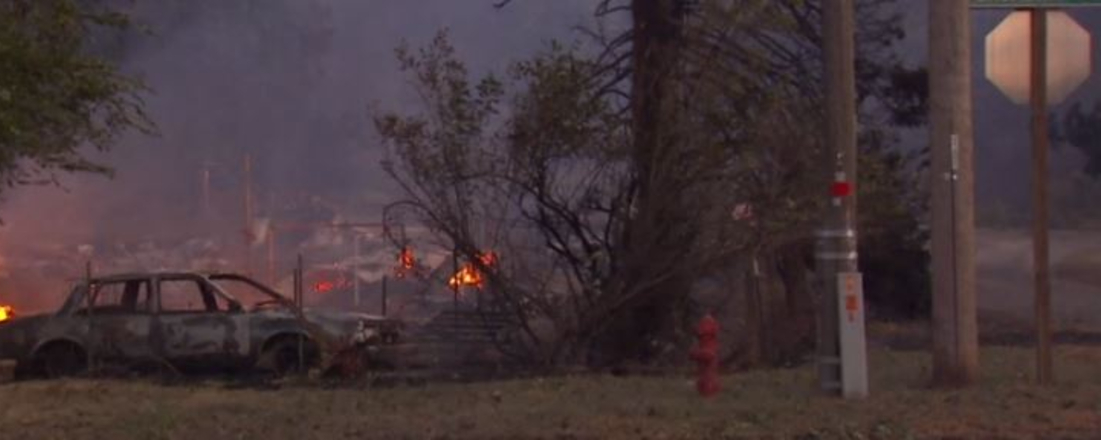
In the News
What We Don’t Know About Wildfire Smoke Should Scare Us
- Huffington Post
-
Focus Areas
Environmental Health -
Issues
Wildfires & Extreme Heat -
Programs
Tracking California

Wildfire smoke has left California with air quality so bad in some areas that it was literally off the charts. We know that that smoke is bad for us in the short term: it leaves people coughing and suffering from headaches and sore throats; it inflames some existing health conditions, such as asthma and heart problems; and it may even make a person more susceptible to COVID-19 symptoms. But when it comes to the long-term effects that wildfire smoke may have on people, there are still more questions than answers.

Unfortunately for all of us, we’re all research subjects. [There are] a lot of people that are being exposed repeatedly to wildfire smoke, so we’re going to know a lot more in the coming years.Dr. Gina Solomon
Former director of PHI’s Achieving Resilient Communities (ARC) and PHI’s Science for Toxic Exposure Prevention
The outstanding question, Dr. Solomon said, is whether particulate matter ― the dangerous mixture of tiny particles and liquid droplets in the air ― in wildfire smoke is just as toxic as the air tainted by cigarettes, tailpipes and other year-round pollutants.
“If wildfire smoke particulate matter behaves just like other particles, then the picture is not good for long-term health,” she said. Exposure to particulate matter from air pollution reduces lung function, and it’s especially harmful for children since their lungs are still developing, she added.
Dr. Lisa Miller, the associate director of research at the California National Primate Research Center and a professor at the University of California, Davis is one of the experts working to expand what we know about the long-term effects of smoke exposure.
When severe wildfires left her Davis-based research facility blanketed in smoke in 2008, Miller had the idea to observe wildfire smoke exposure on baby monkeys living in enclosed, half-acre fields outdoors at the facility. During the 10-day period of smoky conditions, the amount of particulate matter in the area was far above the federal standard for healthy air and sometimes more than doubled the safe amount per cubic meter.
The study followed those monkeys from infancy to around three years of age, and it led to grim findings.
“The animals that were exposed to the smoke during that period of time when they were babies had deficiencies in their immune system, and their lungs appear to be more stiff,” Miller said.
One of Miller’s biggest concerns is that these fires are burning up more than just forests — they’re burning up artificial materials in people’s homes, especially plastics that emit dangerous chemicals when they burn.
“I think it’s important for people to really understand that this isn’t just wood burning,” she said.
Solomon agreed, saying, “There’s other stuff in that smoke.”
“If you live near the fire, there’s a lot a lot of other material, including chemicals like benzene that are emitted from combustion that are very, very toxic substances,” she said.
Solomon has seen that problem show up in unexpected places. When a small group of residents in Santa Rosa, California, returned home after the catastrophic Tubbs fire in 2017, several of them found that their tap water suddenly had a strong, foul odor. Testing found that their water contained extraordinarily high concentrations of benzene, a carcinogen known to cause leukemia in humans.
“Levels were about up to about 1,000 times higher than the legally allowable concentrations,” Solomon said.
When the same phenomenon was observed in Paradise, California, after people returned home following the 2018 Camp fire, Solomon secured funding to try and figure out what was happening. She’s still putting the data together, but one explanation appears the most likely: The water systems lost pressure when the fires stormed those communities and pipes instead sucked in wildfire smoke, which contains benzene, she said. Those levels of benzene were made worse by all the incinerated plastics inside people’s homes and the charred plastic water pipes, which both released benzene when they burned.
“Anytime you have a fire come through and there’s a loss of pressure in the system, there’s a risk of having severe contamination of the water system afterwards. Unfortunately, this can happen again.”
Dr. Gina Solomon, program advisor, Tracking California
Click below to read the full article in the Huffington Post.
Originally published by Huffington Post
More Updates
Work With Us
You change the world. We do the rest. Explore fiscal sponsorship at PHI.
Support Us
Together, we can accelerate our response to public health’s most critical issues.
Find Employment
Begin your career at the Public Health Institute.



